Summary of protein factors involved in hematopoietic stem cell culture
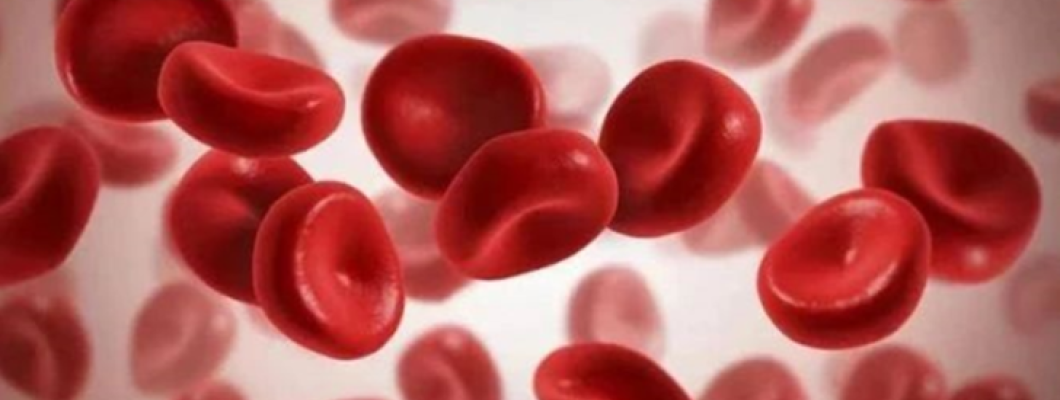
Summary of protein factors
involved in hematopoietic stem cell culture
source:T&L Biotechnology Release time:2023-07-13
Introduction
In recent years, stem cells have become increasingly
widely used in clinical applications. However, the proportion and quantity of
stemcells in the human body are extremely low, which cannot meet clinical
needs. Therefore, in vitro expansion and cultivation of stem cells have become
increasingly important. Due to ethical and technological reasons, the treatment
of stem cells still faces many problems. The surface markers of
hematopoietic stem/progenitor cells and various lineages of blood cells are
relatively clear, and the phenotypic characteristics of cells can be
quantitatively selected, separated, and their functions can be relatively free,
without the need for complex downstream processes such as "biological
scaffolds" for nerve, vascular, and surgical transplantation. Therefore,
it is the best model for stem cell expansion and differentiation, and is
also convenient for direct clinical use.
Hematopoietic stem cells have a high degree of
self-renewal and multiple differentiation potentials. They can produce all
mature blood cells, such as red blood cells, white blood cells, platelets, and
lymphocytes, and can rebuild the entire hematopoietic system. In vitro
expansion of hematopoietic stem cells requires maintaining their self-renewal
ability while also preventing their differentiation, making it a highly
challenging technology. In recent years, a large number of experiments have
shown that the differentiation of hematopoietic stem cells depends on
cytokines. We will briefly summarize the factors and their effects used in
hematopoietic stem cell culture.
Stem cell factor(SCF)
Stem cell factor (SCF) is a factor that acts by
anchoring and expressing the tyrosine receptor c-Kit on the surface of all
HSCs. Defective c-Kit expression leads to a decrease in the number of HSC
expansion. Currently, almost all cytokine combinations used in HSC culture
experiments contain SCF. In addition, both SCF and FL3 belong to the tyrosine
kinase receptor TKR family, which has a synergistic effect on expanding
primitive hematopoietic cells. By binding to specific TKR, SCF transmits
signals to the cells, initiating early division and expansion of
progenitor cells, allowing cells to begin expanding and
inhibiting apoptosis after completing the G0 phase .
Thrombopoietin(TPO)
TPO was initially believed to be a specific growth factor
for megakaryocytes, belonging to the category of specific acting cytokines that
can maintain the expansion, differentiation, maturation, division, and
formation of functional platelets in megakaryocytes. It is the preferred factor
for expanding megakaryocytes. In recent years, experiments have confirmed that
TPO plays an important role in promoting HSC expansion in vitro studies,
and when combined with other cytokines, it can increase the total number of
colony forming units and the expansion fold of
CD34+ stem cells. Especially in FL3 combinations, it can maintain
long-term growth and expansion of cord blood CD34+ stem cells.
interleukin-3(IL-3)
Interleukin-3 (IL-3), also known as mast cell growth
factor, is a pleiotropic cytokine mainly produced by activated T lymphocytes,
which can stimulate the proliferation and differentiation of pluripotent HSCs
and different lineage oriented progenitor cells. After IL-3 induced
heterodimerization of stem cell surface receptors, they can bind to many signal
transduction proteins, such as the Janus kinase signaling transducer and
transcriptional activator (JAK/STAT) pathway, thereby stimulating a downregulated
signal flow and participating in the regulation of stem cell expansion . IL-3
can also activate the extracellular signal regulated kinase (ERK) pathway and
the c-jun aminotransferase (JNK) pathway, inducing the growth, expansion , and
survival of stem cells.
Interleukin-6(IL-6)
IL-6 is a multidirectional cytokine that plays an
important role in host defense by regulating immune and inflammatory responses.
IL-6 is produced by T cells, monocytes, fibroblasts, endothelial cells, and
keratinocytes, and has multiple biological functions. It can promote B cell
differentiation and antibody production, synergistically IL-3 play a
role in the development of megakaryocytes and platelet production, induce the
expression of acute phase proteins in the liver, and regulate bone metabolism.
IL-6 transmits signals through the IL-6 receptor system, which is composed of
two chains: IL-6Rα and gp130. STAT3 is the decisive molecule in maintaining the
undifferentiated state of embryonic stem cells, while IL-6 is the initial
promoter of the JAK/STAT3 signaling pathway.
LFLT3 ligand (FL)
FLT3 ligand is a growth factor that regulates early
hematopoietic cell expansion . FLT3 ligand binds to cells expressing tyrosine
kinase receptor FLT3. The FLT3 ligand itself does not stimulate the expansion
of early hematopoietic cells, but rather synergistically induces growth
and differentiation with other CSFs and interleukins. Unlike SCF, FLT3 ligand
has no effect on mast cells. Multiple subtypes of FLT3 ligand have been
identified. The main bioactive form is anchored on the cell surface as the
extracellular domain of transmembrane protein (209a.). The membrane bound
isomer can be cleaved by proteins to generate biologically active soluble
isomers.
FMS-liketyrosine kinease 3
The FMS-liketyrosine kinease 3 (FL3) highly expressed in
CD34+CD38dim cells transmits signals to the cell by binding to its specific
tyrosine kinase active receptors (TKRs). FL3 acts on HSC/HPC and exerts
hematopoietic regulation by binding to TKR on the cell surface. FL3 is also a
very important early progenitor cell stimulating factor, which has a
significant promoting effect on the in vitro expansion of HSC/HPC. It can
prevent CD34+stem cells from gradually differentiating and depleting HPC during
in vitro expansion.
Transforming growth factor- β
Transforming growth factor- β、Transforming
growth factor- β 1 β 2 and β 3 subtypes of mammals emit signals through
the same receptor, causing similar biological responses. They are
multifunctional cytokines that regulate cell expansion, growth,
differentiation, and movement, as well as the synthesis and deposition of
extracellular matrix. Transforming growth factor- β (TGF- β) is produced by
bone marrow stromal cells.It inhibits early HSC/HPC from entering the S phase,
causing most HSC/HPC to be in the G0 phase.
Macrophage inflammatory protein-1 α
Macrophage inflammatory protein-1β (MIP-1β) is a natural
antagonist of MIP-1α, which be accompanied by it. It can relieve the
inhibitory effect of MIP-1α on early HSC/HPC and prevent HSC from returning to
a quiescent state.
p38
P38, as a signaling molecule belonging to the mitogen
activated protein kinase (MAPK) family, inhibits the in vitro expansion of HSCs
under normoxic conditions. Experiments have shown that when HSCs are added to
serum-free culture media containing TPO, SCF, and FL3, oxidative stress
activates p38 and p16, leading to a significant decrease in the number of mouse
HSCs.
Granulomacrophage colony-stimulating factor (GM-CSF)
Granulocyte macrophage colony-stimulating factor is a
drug used clinically for various causes of leukopenia or granulocytopenia. The
current cell mobilization agent is granulocyte macrophage colony-stimulating
factor (GM-CSF), which not only increases the number of hematopoietic stem
cells in peripheral blood, but also assists in cardiac function and other
functions.
Granulocyte colony stimulating factor (G-CSF)
The effects of granulocyte colony-stimulating factors
generally include antigen presentation, enhancement of macrophage function, and
promotion of hematopoietic stem cell expansion. Granulocyte colony-stimulating
factor is a powerful mobilization agent for bone marrow stem cells, which can
stimulate the expansion of autologous bone marrow stem cells and mobilize them
from the bone marrow to peripheral blood.
Erythropoietin (EPO)
Erythropoietin (EPO) is the main stimulatory factor in
hematopoietic differentiation, which can promote the differentiation of
hematopoietic stem cells into primitive red blood cells, accelerate the
division and expansion of young red blood cells, promote the synthesis of
hemoglobin, and also play an important role in the study of red blood cell
induced differentiation.
Hematopoietic
stem cells have the potential for self-renewal and multi-directional
differentiation. The combination of different factors has different effects on
the expansion of hematopoietic stem cells. The use of hematopoietic stem cells
can selectively induce the production of multiple cells, which undoubtedly
provides new ideas for the expansion of NK cells. At present, NK cells can be
induced from embryonic stem cells and iPSCs, but both embryonic stem cells and
induced pluripotent stem cells need to be transformed into hematopoietic stem
cells before they can differentiate into NK cells. Therefore, hematopoietic
stem cells play an indispensable bridge in this process. The advantages of NK
cells derived from stem cells are that they can be used on demand, have strong
homogeneity, low cytokine release, and strong killing activity. Therefore,
there is still a high enthusiasm for exploring NK cells derived from stem cells
on the market. There are literatures on the induction of stem cells into NK
cells. We mainly focus on the factors mentioned in the literature.
1. NK cells derived from human embryonic stem cells
hESCs were transferred to coculture with murine bone marrow stromal cell line M210-B4 in medium containing RPMI 1640, 15% defined fetal bovine serum , 2 mM L-glutamine, 1% nonessential amino acids , 1% penicillin/streptomyocin, and 0.1 mM -mercaptoethanol with medium changes every 2 to 3 days as previously described. After 17 to 20 days, single-cell suspension was prepared and CD34+CD45+ cells were isolated, as previously described. Isolated cells were transferred to a second coculture with the murine fetal liver–derived stromal cell line AFT024 in medium containing a 1:2 mixture of Dulbecco modified Eagle medium/Ham F12, 20% heat-inactivated human serum AB, 2 mM L-glutamine, 1% penicillin/streptomyocin, 5 ng/mL sodium selenite, 50μM ethanolamine, 25μM -mercaptoethanol, 20 mg/mL ascorbic acid, interleukin-3, stem cell factor, IL-15 , Fms-like tyrosine kinase 3 ligand , and IL-7 . Cells were fed with fresh medium by half medium changes every 5 to 6 days. After 30 to 35 days in culture, cells were harvested, filtered through 70-μm filter, and used for further analysis.
2. NK cells derived from human pluripotent stem cells
We
harveste 18–21 days cells for CD34+ CD45+ progenitor cell
enrichment .One hundred thousand CD34+ CD45+ cells were placed onto
EL08-1D2 stroma with 1 ml of NK cell initiating cytokines (IL-3, IL7, IL-15,
stem cell factor, and fms-like tyrosine kinase receptor-3 ligand ). NK cell
cultures we refreshed with 0.5 ml of cytokine-containing medium every 4–5 days.
Mature NK cells were measured at 28–35 days of culture on EL08-1D2.
T&L stem cell related cytokines
& growth factor
About T&L
T&L
Biotechnology Ltd., founded in 2011, focuses on the research and development of
upstream GMP grade raw materials and reagents of cell and gene therapy (CGT).
We commit to providing reliable products and services for life science

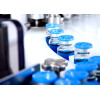
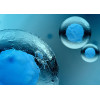
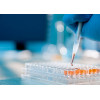
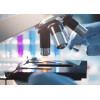
-100x100w.jpg)
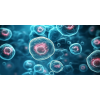
21 Comment(s)
Chơi game trên FB88 luôn mang lại cảm giác công bằng và minh bạch.
Dịch vụ khách hàng của họ thật hoàn hảo, phản hồi nhanh chóng và thân thiện.
Các trò chơi của FB88 rất dễ hiểu, tôi có thể chơi ngay mà không cần tìm hiểu quá nhiều.
FB88 cung cấp một trải nghiệm cá cược thể thao rất toàn diện, từ các sự kiện đến game giải trí.
Tôi thích các phương thức nạp và rút tiền đa dạng mà FB88 cung cấp, rất tiện lợi.
Chức năng của nền tảng rất ổn định, gần như không có hiện tượng giật lag.
Các chương trình khuyến mãi trên FB88 rất hấp dẫn, giúp tôi luôn cảm thấy có lợi khi tham gia.
Hệ thống bảo mật của họ rất chặt chẽ, giúp tôi cảm thấy yên tâm khi chơi.
Trò chơi trên FB88 rất dễ chơi, quy tắc rõ ràng và dễ hiểu.
FB88 là một nền tảng chơi game tuyệt vời với rất nhiều loại game hấp dẫn.
FB88 có một giao diện người dùng rất thân thiện, tôi có thể dễ dàng làm quen.
Tôi rất yêu thích các trò chơi casino trực tuyến của FB88, chúng rất chân thực và thú vị.
FB88 có rất nhiều trò chơi casino trực tuyến, tôi rất thích thử nghiệm các trò chơi mới.
FB88 cung cấp các chương trình khuyến mãi rất hấp dẫn, người chơi có cơ hội nhận giải thưởng lớn.
FB88 cung cấp một nền tảng rất dễ sử dụng, tôi chưa bao giờ gặp vấn đề với giao diện.
FB88 cung cấp rất nhiều lựa chọn cá cược thể thao, đáp ứng mọi nhu cầu của người chơi.
Chơi game trên FB88 luôn mang lại cảm giác công bằng và minh bạch.
FB88 là một nền tảng chơi game tuyệt vời với rất nhiều loại game hấp dẫn.
Trường Tiểu học Nguyễn Trung Trực được thành lập năm 1985 có địa chỉ tại 9A Phạm Hồng Thái, phường Nguyễn Trung Trực, quận Ba Đình, Hà Nội (Nay thành phường Trúc Bạch). Trường hoạt động dưới sự quản lý của UBND quận Ba Đình và Phòng Giáo dục và Đào tạo Ba Đình. Trường được xây dựng khang trang trên diện tích hơn 3000 m2 với đủ các phòng học và phòng chức năng cho các hoạt động học tập, vui chơi, giải trí của học sinh.
Địa chỉ: Số 9A Phạm Hồng Thái - Ba Đình - Hà Nội
Email: c1nguyentrungtruc-bd@hanoiedu.vn
website: https://c1nguyentrungtruc.badinh.edu.vn/
Điện thoại: 438261441
Trường Tiểu học Nguyễn Trung Trực được thành lập năm 1985 có địa chỉ tại 9A Phạm Hồng Thái, phường Nguyễn Trung Trực, quận Ba Đình, Hà Nội (Nay thành phường Trúc Bạch). Trường hoạt động dưới sự quản lý của UBND quận Ba Đình và Phòng Giáo dục và Đào tạo Ba Đình. Trường được xây dựng khang trang trên diện tích hơn 3000 m2 với đủ các phòng học và phòng chức năng cho các hoạt động học tập, vui chơi, giải trí của học sinh.
Địa chỉ: Số 9A Phạm Hồng Thái - Ba Đình - Hà Nội
Email: kumu.io@kumu.io
website: Https://kumu.io/NhacaiFB88betB88S/nhacaifb88betb88s#nhacaifb88betb88s
Điện thoại: 438261441
Trường Tiểu học Nguyễn Trung Trực được thành lập năm 1985 có địa chỉ tại 9A Phạm Hồng Thái, phường Nguyễn Trung Trực, quận Ba Đình, Hà Nội (Nay thành phường Trúc Bạch). Trường hoạt động dưới sự quản lý của UBND quận Ba Đình và Phòng Giáo dục và Đào tạo Ba Đình. Trường được xây dựng khang trang trên diện tích hơn 3000 m2 với đủ các phòng học và phòng chức năng cho các hoạt động học tập, vui chơi, giải trí của học sinh.
Địa chỉ: Số 9A Phạm Hồng Thái - Ba Đình - Hà Nội
Email: kumu.io@kumu.io
website: Https://kumu.io/NhacaiFB88betB88S/nhacaifb88betb88s#nhacaifb88betb88s
Điện thoại: 438261441
Trường Tiểu học Nguyễn Trung Trực được thành lập năm 1985 có địa chỉ tại 9A Phạm Hồng Thái, phường Nguyễn Trung Trực, quận Ba Đình, Hà Nội (Nay thành phường Trúc Bạch). Trường hoạt động dưới sự quản lý của UBND quận Ba Đình và Phòng Giáo dục và Đào tạo Ba Đình. Trường được xây dựng khang trang trên diện tích hơn 3000 m2 với đủ các phòng học và phòng chức năng cho các hoạt động học tập, vui chơi, giải trí của học sinh.
Địa chỉ: Số 9A Phạm Hồng Thái - Ba Đình - Hà Nội
Email: s666@s666s666s.com
website: Https://s666s666s.com/
Điện thoại: 438261441
Trường Tiểu học Nguyễn Trung Trực được thành lập năm 1985 có địa chỉ tại 9A Phạm Hồng Thái, phường Nguyễn Trung Trực, quận Ba Đình, Hà Nội (Nay thành phường Trúc Bạch). Trường hoạt động dưới sự quản lý của UBND quận Ba Đình và Phòng Giáo dục và Đào tạo Ba Đình. Trường được xây dựng khang trang trên diện tích hơn 3000 m2 với đủ các phòng học và phòng chức năng cho các hoạt động học tập, vui chơi, giải trí của học sinh.
Địa chỉ: Số 9A Phạm Hồng Thái - Ba Đình - Hà Nội
Email: s666@s666s666s.com
website: Https://s666s666s.com/
Điện thoại: 438261441
Trường Tiểu học Nguyễn Trung Trực được thành lập năm 1985 có địa chỉ tại 9A Phạm Hồng Thái, phường Nguyễn Trung Trực, quận Ba Đình, Hà Nội (Nay thành phường Trúc Bạch). Trường hoạt động dưới sự quản lý của UBND quận Ba Đình và Phòng Giáo dục và Đào tạo Ba Đình. Trường được xây dựng khang trang trên diện tích hơn 3000 m2 với đủ các phòng học và phòng chức năng cho các hoạt động học tập, vui chơi, giải trí của học sinh.
Địa chỉ: Số 9A Phạm Hồng Thái - Ba Đình - Hà Nội
Email: s666@s666s666s.com
website: Https://s666s666s.com/
Điện thoại: 438261441
Trường Tiểu học Nguyễn Trung Trực được thành lập năm 1985 có địa chỉ tại 9A Phạm Hồng Thái, phường Nguyễn Trung Trực, quận Ba Đình, Hà Nội (Nay thành phường Trúc Bạch). Trường hoạt động dưới sự quản lý của UBND quận Ba Đình và Phòng Giáo dục và Đào tạo Ba Đình. Trường được xây dựng khang trang trên diện tích hơn 3000 m2 với đủ các phòng học và phòng chức năng cho các hoạt động học tập, vui chơi, giải trí của học sinh.
Địa chỉ: Số 9A Phạm Hồng Thái - Ba Đình - Hà Nội
Email: s666@s666s666s.com
website: Https://s666s666s.com/
Điện thoại: 438261441
Trường Tiểu học Nguyễn Trung Trực được thành lập năm 1985 có địa chỉ tại 9A Phạm Hồng Thái, phường Nguyễn Trung Trực, quận Ba Đình, Hà Nội (Nay thành phường Trúc Bạch). Trường hoạt động dưới sự quản lý của UBND quận Ba Đình và Phòng Giáo dục và Đào tạo Ba Đình. Trường được xây dựng khang trang trên diện tích hơn 3000 m2 với đủ các phòng học và phòng chức năng cho các hoạt động học tập, vui chơi, giải trí của học sinh.
Địa chỉ: Số 9A Phạm Hồng Thái - Ba Đình - Hà Nội
Email: s666@s666s666s.com
website: Https://s666s666s.com/
Điện thoại: 438261441
Trường Tiểu học Nguyễn Trung Trực được thành lập năm 1985 có địa chỉ tại 9A Phạm Hồng Thái, phường Nguyễn Trung Trực, quận Ba Đình, Hà Nội (Nay thành phường Trúc Bạch). Trường hoạt động dưới sự quản lý của UBND quận Ba Đình và Phòng Giáo dục và Đào tạo Ba Đình. Trường được xây dựng khang trang trên diện tích hơn 3000 m2 với đủ các phòng học và phòng chức năng cho các hoạt động học tập, vui chơi, giải trí của học sinh.
Địa chỉ: Số 9A Phạm Hồng Thái - Ba Đình - Hà Nội
Email: s666@s666s666s.com
website: Https://s666s666s.com/
Điện thoại: 438261441
Trường Tiểu học Nguyễn Trung Trực được thành lập năm 1985 có địa chỉ tại 9A Phạm Hồng Thái, phường Nguyễn Trung Trực, quận Ba Đình, Hà Nội (Nay thành phường Trúc Bạch). Trường hoạt động dưới sự quản lý của UBND quận Ba Đình và Phòng Giáo dục và Đào tạo Ba Đình. Trường được xây dựng khang trang trên diện tích hơn 3000 m2 với đủ các phòng học và phòng chức năng cho các hoạt động học tập, vui chơi, giải trí của học sinh.
Địa chỉ: Số 9A Phạm Hồng Thái - Ba Đình - Hà Nội
Email: s666@s666s666s.com
website: Https://s666s666s.com/
Điện thoại: 438261441
Trường Tiểu học Nguyễn Trung Trực được thành lập năm 1985 có địa chỉ tại 9A Phạm Hồng Thái, phường Nguyễn Trung Trực, quận Ba Đình, Hà Nội (Nay thành phường Trúc Bạch). Trường hoạt động dưới sự quản lý của UBND quận Ba Đình và Phòng Giáo dục và Đào tạo Ba Đình. Trường được xây dựng khang trang trên diện tích hơn 3000 m2 với đủ các phòng học và phòng chức năng cho các hoạt động học tập, vui chơi, giải trí của học sinh.
Địa chỉ: Số 9A Phạm Hồng Thái - Ba Đình - Hà Nội
Email: s666@s666s666s.com
website: Https://s666s666s.com/
Điện thoại: 438261441
Trường Tiểu học Nguyễn Trung Trực được thành lập năm 1985 có địa chỉ tại 9A Phạm Hồng Thái, phường Nguyễn Trung Trực, quận Ba Đình, Hà Nội (Nay thành phường Trúc Bạch). Trường hoạt động dưới sự quản lý của UBND quận Ba Đình và Phòng Giáo dục và Đào tạo Ba Đình. Trường được xây dựng khang trang trên diện tích hơn 3000 m2 với đủ các phòng học và phòng chức năng cho các hoạt động học tập, vui chơi, giải trí của học sinh.
Địa chỉ: Số 9A Phạm Hồng Thái - Ba Đình - Hà Nội
Email: s666@s666s666s.com
website: Https://s666s666s.com/
Điện thoại: 438261441
Trường Tiểu học Nguyễn Trung Trực được thành lập năm 1985 có địa chỉ tại 9A Phạm Hồng Thái, phường Nguyễn Trung Trực, quận Ba Đình, Hà Nội (Nay thành phường Trúc Bạch). Trường hoạt động dưới sự quản lý của UBND quận Ba Đình và Phòng Giáo dục và Đào tạo Ba Đình. Trường được xây dựng khang trang trên diện tích hơn 3000 m2 với đủ các phòng học và phòng chức năng cho các hoạt động học tập, vui chơi, giải trí của học sinh.
Địa chỉ: Số 9A Phạm Hồng Thái - Ba Đình - Hà Nội
Email: s666@s666s666s.com
website: Https://s666s666s.com/
Điện thoại: 438261441
Trường Tiểu học Nguyễn Trung Trực được thành lập năm 1985 có địa chỉ tại 9A Phạm Hồng Thái, phường Nguyễn Trung Trực, quận Ba Đình, Hà Nội (Nay thành phường Trúc Bạch). Trường hoạt động dưới sự quản lý của UBND quận Ba Đình và Phòng Giáo dục và Đào tạo Ba Đình. Trường được xây dựng khang trang trên diện tích hơn 3000 m2 với đủ các phòng học và phòng chức năng cho các hoạt động học tập, vui chơi, giải trí của học sinh.
Địa chỉ: Số 9A Phạm Hồng Thái - Ba Đình - Hà Nội
Email: s666@s666s666s.com
website: Https://s666s666s.com/
Điện thoại: 438261441
Trường Tiểu học Nguyễn Trung Trực được thành lập năm 1985 có địa chỉ tại 9A Phạm Hồng Thái, phường Nguyễn Trung Trực, quận Ba Đình, Hà Nội (Nay thành phường Trúc Bạch). Trường hoạt động dưới sự quản lý của UBND quận Ba Đình và Phòng Giáo dục và Đào tạo Ba Đình. Trường được xây dựng khang trang trên diện tích hơn 3000 m2 với đủ các phòng học và phòng chức năng cho các hoạt động học tập, vui chơi, giải trí của học sinh.
Địa chỉ: Số 9A Phạm Hồng Thái - Ba Đình - Hà Nội
Email: s666@s666s666s.com
website: Https://s666s666s.com/
Điện thoại: 438261441
Leave a Comment